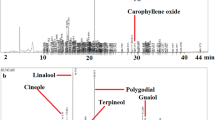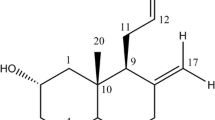Abstract
The purpose of the present investigation was to compare similarities and differences in immune response among Echinacea species, which are commonly used to treat upper respiratory infections. The investigation involved two components: acquisition of immunomodulatory data reported here for the first time, and combined phenetic analysis of these data along with previous reports. Experimental data were obtained by stimulating human PBMC in vitro with extracts from Echinacea spp. and assaying production of three cytokines (interleukin-1β [IL-1β] interleukin-2 [IL-2], and tumor necrosis factor α [TNF-α]). Phenetic analyses were employed to compare responses across the entire data set, including UPGMA (Unweighted Pair Group Method with Arithmetic Mean) and neighbor-joining methods. In the immune experiments conducted for this investigation, E. angustifolia,E. paradoxa, E. purpurea, E. simulata, andE. tennesseensis extracts significantly augmented IL-1 β and TNF-α production, whereas no extracts significantly modulated IL-2. All phenetic methods produced similar dendrograms, revealing two species pairs (E. angustifolia + E. simulata and E. pallida + E.sanguinea) where both species cluster tightly and have similar immune-response profiles. These two species-pairs are maximally dissimilar from each other. The remaining species (E. paradoxa, E. purpurea, and E. tennesseensis) occupy intermediate positions in the dendrogram. Our results suggest that Echinacea spp. act heterogeneously on immune function. The utility of these data for science and industry is discussed.
Similar content being viewed by others
Literature Cited
Barak V., S. Birkenfeld, T. Halperin, I. Kalickman. 2002. The effect of herbal remedies on the production of human inflammatory and anti-inflammatory cytokines. Israel Medical Association Journal 4:919–922.
Barnes, J., Anderson L. A., S. Gibbons, J.D. Phillipson. 2005.Echinacea species (Echinacea angustifolia (DC.) Hell.,Echinacea pallida (Nutt.) Nutt.,Echinacea purpurea (L.) Moench): A review of their chemistry, pharmacology and clinical properties. Journal of Pharmacy and Pharmacology 57:929–954.
Barrett, B.P., R.L. Brown, K. Locken, R. Maberry, J.A. Bobula, D. D’Alessio. 2002. Treatment of the common cold with unrefinedEchinacea. Annals of Internal Medicine 137:939–946.
Binns, S.E., B.R. Baum, and J.T. Arnason. 2002a. A taxonomic revision ofEchinacea (Asteraceae: Heliantheae). Systematic Botany 27:610–632.
—, J. Hudson, S. Merali, J.T. Arnason. 2002b. Antiviral activity of characterized extracts fromEchinacea spp. (Heliantheae: Asteraceae) againstHerpes simplex virus (HSV-I). Planta Medica 68:780–783.
Bodinet, C., U. Lindequist, E. Teuscher, J. Freudenstein. 2002. Effect of an orally applied herbal immunomodulator on cytokine induction and antibody response in normal and immunosuppressed mice. Phytomedicine 9:606–613.
Caruso, T. J. and J.M. Gwaltney. 2005. Treatment of the common cold withEchinacea: A structured review. Clinical Infectious Diseases 40:807–810.
Cundell, D.R., M.A. Matrone, P. Ratajczak, J.D. Pierce, Jr. 2003. The effect of aerial parts ofEchinacea on the circulating white cell levels and selected immune functions of the aging male Sprague-Dawley rat. International Immunopharmacology 3:1041–1048.
Durum, S.K., J.A. Schmidt, J.J. Oppenheim. 1985. Interleukin-1: An immunological perspective. Annual Review of Immunology 3:263–287.
Elsasser-Beile, U., W. Willenbacher, H.H. Bartsch, H. Gallati, J. Sculte Monting, S. van Kleist. 1996. Cytokine production in leukocyte cultures during therapy withEchinacea extract. Journal of Clinical Laboratory Analysis 10:441–445.
Gertsch, J., R. Schoop, U. Kuenzle, A. Sutter. 2004.Echinacea alkylamides modulate TNF-> gene expression via cannabinoid receptor CB2 and multiple signal transduction pathways. FEBS Letters 577:563–569.
Goel, V., R. Lovlin, C. Chang, J. V. Slama, R. Barton, R. Gahler, R. Bauer, L. Goonewardene, T.K. Basu. 2005. A proprietary extract from the echinacea plant (Echinacea purpurea) enhanced systemic immune response during a common cold. Phytotherapy Research 19:689–694.
Kohut, M.L. and D.S. Senchina. 2004. Reversing age-associated immunosenescence via exercise. Exercise Immunology Review 10:6–41.
Lindenmuth, G.F. and E.B. Lindenmuth. 2000. The efficacy ofEchinacea compound herbal tea preparation on the severity and duration of upper respiratory and flu symptoms: A randomized, double-blind placebo-controlled study. Journal of Alternative and Complementary Medicine 6:327–334.
Luettig, B., C. Steinmuller, G.E. Gifford, H. Wagner, M.L. Lohmann-Matthes. 1989. Macrophage activation by the polysaccharide arabinogalactan isolated from plant cell cultures ofEchinacea purpurea. Journal of the National Cancer Institute 81:669–675.
McCann, D. A., F. Macaluso, M. L. Kohut, D. S. Senchina. n.d. Cytokine- and interferon-modulating properties of Echinacea spp. root tinctures stored at -20 degrees C for 2 years. Submitted.
McGregor, R. L. 1968. The taxonomy of the genusEchinacea (Compositae). The University of Kansas Science Bulletin 48:113–142.
Randolph, R.K., K. Gellenbeck, K. Stonebrook, E. Brovelli, D. Bankaitis-Davis, J. Cheronis. 2003. Regulation of human immune gene expression as influenced by a commercial blendedEchinacea product: Preliminary studies. Experimental Biology and Medicine 228:1051–1056.
Rininger, J., S. Kickner, P. Chigurupati, A. McLean, Z. Franck. 2000. Immunopharmacological activity ofEchinacea preparations following simulated digestion on murine macrophages and human peripheral blood mononuclear cells. Journal of Leukocyte Biology 68:503–510.
Schulten, B., M. Bulitta, B. Ballering-Bruhl, U. Koster, M. Schafer. 2001. Efficacy ofEchinacea purpurea in patients with a common cold. A placebo-controlled, randomised, double-blind clinical trial. Arzneimittelforschung 51:563–568.
Schwarz, E., J. Metzler, J. P. Diedrich, J. Freuden-Stein, C. Bode, J. C. Bode. 2002. Oral administration of freshly expressed juice ofEchinacea purpurea herbs fail to stimulate the nonspecific immune response in healthy young men: Results of a double-blind, placebo-controlled crossover study. Journal of Immunotherapy 25:413–420.
Senchina, D.S., L. Wu, G.N. Flinn, D.N. Konopka, J.A. McCoy, M.P. Widrlechner, E.S. Wurtele, M. L. Kohut. n.d. Year-and-a-half old, driedEchinacea spp. roots retain cytokine-modulating capa-bilities in an in vitro human older adult model of influenza vaccination. Submitted.
—, D. A. McCann, J. M. Asp, J. A. Johnson, J. E. Cunnick, M.S. Kaiser, M.L. Kohut. 2005. Changes in immunomodulatory properties ofEchinacea spp. root infusions and tinctures stored at 4°C for four days. Clinica Chimica Acta 355:67–82.
Smith, K.A. 1984. Interleukin 2. Annual Review of Immunology 2:319–333.
Stimpel, M., A. Proksch, H. Wagner, M. L. Lohmann-Matthes. 1984. Macrophage activation and induction of macrophage cytotoxicity by purified polysaccharide fractions from the plantEchinacea purpurea. Infection and Immunity 46:845–849.
Strieter, R.M., S.L. Kunkel, and R.C. Bone. 1993. Role of tumor necrosis factor-alpha in disease states and inflammation. Critical Care Medicine 21:S447-S463.
Swofford, D.L. 2003. PAUP*. Phenetic Analysis Using Parsimony (*and other methods). Version 4.0bl0. Sunderland, Massachusetts: Sinaeur Associates.
Team, R.D.C. 2005. R: A language and environment for statistical computing. Vienna, Austria: R Foundation for Statistical Computing.
Turner, R.B., R. Bauer, K. Woelkart, T.C. Hulsey, J. D. Gangemi. 2005. An evaluation ofEchinacea angustifolia in experimental rhinovirus infections. New England Journal of Medicine 353:341–348.
Yale, S.H. and K. Liu. 2004.Echinacea purpurea therapy for the treatment of the common cold: A randonmized, double-blind, placebo-controlled clinical trial. Annals of Internal Medicine 164:1237–1241.
Author information
Authors and Affiliations
Corresponding author
Rights and permissions
About this article
Cite this article
Senchina, D.S., Flagel, L.E., Wendel, J.F. et al. Phenetic comparison of sevenEchinacea species based on immunomodulatory characteristics. Econ Bot 60, 205–211 (2006). https://doi.org/10.1663/0013-0001(2006)60[205:PCOSES]2.0.CO;2
Received:
Accepted:
Issue Date:
DOI: https://doi.org/10.1663/0013-0001(2006)60[205:PCOSES]2.0.CO;2




